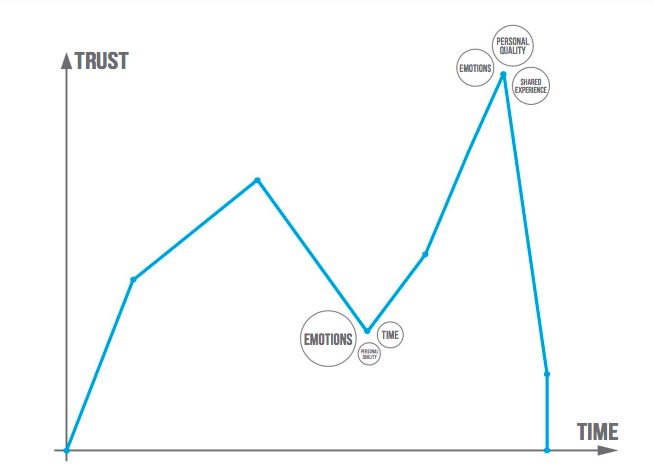Project
Trust Timeline
A guided interview tool for asking focused, personal questions about trust.
This project was part of 3 research projects around trust. You can see the full process here.
About The timeline
The Trust Timeline is a graphic of a time line, with small color-coded pieces representing different factors of trust in a relationship. The interviewer uses this tool to ask the interviewee about a relationship she has had with an individual, an organization or even an institution such as a political party or religious sect. The interviewee chooses three or four major moments or points in time including when the relationship began and the present moment, and maps out the trust they had or didn’t have for the subject of the time line by drawing onto the image.
My Role
Co-Designing the Tool & Testing it
Outcome
Design Interview & Research Tool
Project Collaborators
Jordan Shade
Project Date
2013
Design Methods Used
User Interviews, Co-creation workshops
Usability Testing
Desk Research
Contextual Observations
Important in the sensitive nature of discussing trust in Lebanon, the Trust Timeline affords the interviewee to describe personal moments without giving too much detail about the situation, as the color-coded cards categorize different elements in the relationship. For instance, the card “emotion” or “physical object” could be used without the interviewee explicitly having to say what exact emotion or object was involved in the scenario.
Using the small color-coded pieces, which have titles ranging from “environment” to “personal quality” to “shared experience” the interviewer and interviewee describe the different points marked on the timeline. These pieces represent the factors which led to a gain or loss of trust at each moment. This activity helps the interviewee reflect on how trust was formed, and what influenced them in their feelings of trust.
The interviewer uses the tool to keep the conversation focused on one individual/organization/institution and along the span of time indicated by the interviewee. This way, more pointed data can be collected about how people come to feel trust for others.
Lastly, the tool allows for the data gathered to be cross checked on many time lines, due to the method of documentation. Each time line can be compared to another, and factors that influence different relationships can be seen clearly. The timeline and cards were translated into four languages: English, Arabic, Armenian and French, so that they may allow more people to use them with the language they are most comfortable speaking.







